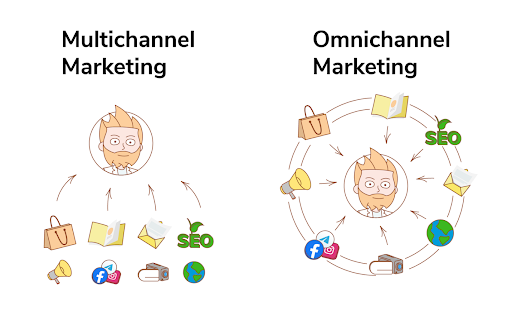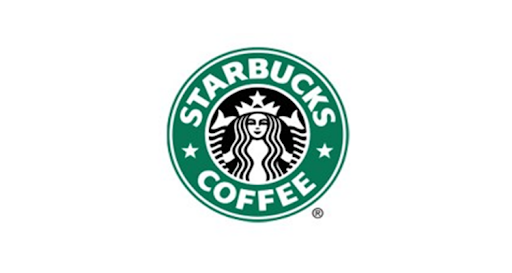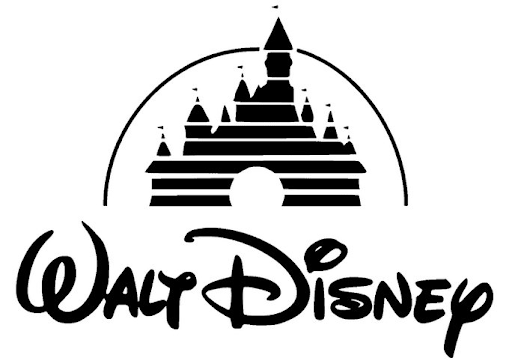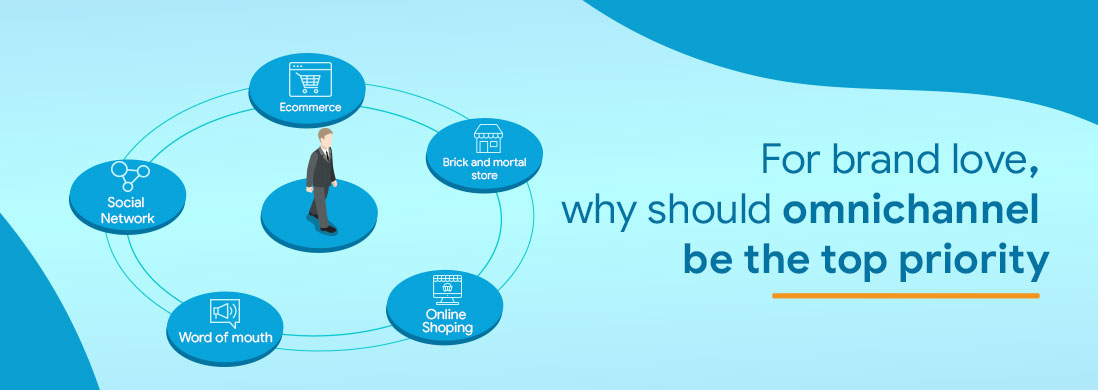The phrase ‘omnichannel marketing’ has evolved over the years to refer to the strategy used by brands to integrate multi-channel, both offline and online, into a synergistic whole. It’s based on the understanding of a free-willy journey a customer takes and strolls across the channels, mediums, and even physical stores.
It’s crucial for e-commerce and retail marketers to develop a plan for how they will create a consistent message for their customers across all channels. As consumers interact more and more across all channels, sometimes even multiple channels at once.
A single channel is no longer sufficient for modern businesses to accomplish their main advertising objective, as the customer decides where and how she wants to interact with the brand.
The Basics: Multichannel Theory
Without question, the consumer today has more power over the purchasing decision than the advertiser or the marketer. The end user now has more options in how and where they research and when they finally decide to act.
A common definition of multi-channel marketing is the practice of promoting the same good via various channels, each with a distinct message. For instance, a brand’s mobile app might provide a special experience that differs greatly from the brand’s website. That may be different from how consumers are able to interact with a brand via its Facebook or Twitter page. It describes a multi-channel approach because each channel in this scenario is managed, with each one pushing out its own content to consumers. The brand has a number of channels, but they all function separately from one another.
We also know that multichannel marketing is no longer just a good concept but a crucial one. As the number of channels increases and the customers engage with those. It is believed that multichannel engaged customers spend three to four times more than customers who just use one channel. And most marketers do opt for more than one channel to market.
Though the user in a multi-channel environment has access to a number of communication channels they aren’t always connected or synchronized. An omnichannel experience, on the other hand, combines multiple channels with interconnectedness to enable seamless channel switching.

The Omnichannel Theory
The Omni-Channel experience combines everything from marketing to selling to customer service across all channels on a single platform. Brand communication consistency matters. Brands maintain consistency across all communication channels, creating a seamless and continuous interaction at a touchpoint. The stability provided by a comprehensive and mutual communication framework allows for personalization. For each platform, the customer will be able to interact with the company, resulting in a positive experience.
Examples include how a brand’s website, social media platforms, mobile app, and even in-store experience are all reflective of one another. Even days later when the customer starts looking at other products, the mobile app will remember if the customer started a purchase on a brand’s website. The consumer is reminded of their incomplete transaction from several days ago as a result of unification across all channels.
While all omnichannel experiences will utilize multiple channels, not all experiences utilizing multiple channels are omnichannel. The essence of omnichannel is the centrality of the customer around which the brand and communication is built.
Why is Omnichannel? Moreover, why is it important for Brands to scale their operations?
According to Harvard Business Review, more than 70% of consumers use multiple channels during their shopping journey. Additionally, it was discovered that customers who use multiple channels spent more time in the store than those who only use one. Given that 40% of customers say they won’t do business with companies if they can’t use their preferred channels, an omnichannel strategy is often even non-negotiable for them.
Greater Reach:
Businesses benefit from the omnichannel strategy because it allows them to reach new customer segments. This benefit is nearly equally important to leading retailers and ‘others’ (48% vs. 45%), but both figures should be higher because reaching new customers is critical to growth. They are no longer required to look far and wide to find ideal customers. Your support or your products are only a click, an email, a direct message, or a phone call away, no matter where they are.
Improve customer lifetime value:
Customers will always buy from a brand they recognize. Omni-channel marketing ensures a consistent user experience across multiple platforms. Each platform has a distinct and personalized message for each consumer. This level of personalization can lead to improved customer experiences, conversions, and loyalty, all of which can lead to increased revenue over time. Companies that used these strategies kept more than 80% of their customers.
Better Brand Recognition
Increased market awareness results from effective omnichannel marketing strategies. Customers are at least aware of your brand name and goods or services if your brand is promoted first. This could help you significantly outperform your rivals.
Specialized Customer Insight:
Customer information can be gathered and combined from a variety of sources, including cookies, devices, IDs, shopping carts, social media, mailing lists, point-of-sale (POS) systems, referral programs, and more. Additionally, it is simple to determine how each channel contributed to the overall objective. By doing this, you can identify what is broken and fix it as well as identify what is working and utilize it.
How do you create an omnichannel marketing plan?
Any business can benefit from omnichannel, which is increasingly common. The advantages of this strategy are enormous, even for small business owners. More than 60% of respondents concur that this is now a crucial aspect of the company.
But before moving forward, it’s crucial to establish the fundamental principles correctly, just like with any business endeavor.
Start with what you have
It takes time to lay the groundwork for Omnichannel Marketing. Step by step, you get there. As previously stated, start with your basic website and a social media channel and master those before moving on to other platforms. Assure that you are consistently engaging with your audience by posting new content on a regular basis. If you have set up the platforms in a simple manner, be wary of focusing solely on one platform rather than two. People will notice if you engage on Instagram but not on Facebook.
Leverage Customer Data:
Once the decision has been made to fully implement an omnichannel strategy, it is important to take into account not only the brand experience that customers have but also the various touchpoints where they leave their footprints. In order to improve the end user’s experience, data must be analyzed wherever customers have expressed a preference for or shown interest in a specific product or service. For instance:
- As an illustration, they should select pertinent content for each customer and present it to them at the appropriate time.
- Continue having flexible conversations with the clients.
- A thorough analysis of the product to determine the best possible merchandising.
The Right Messaging:
The appropriate content must be presented at the appropriate time, as I already mentioned. The key to effective marketing is personalization. Segmenting all of your macro-level data into smaller lists will help you target your customers with the most appropriate message. For personalized messages, group contacts into various categories based on shared characteristics. For instance:
- Demographics: Age, gender marital status, household income, etc.
- Shopping/Surfing Behavior: How often the customers shop or are consistent with their surfing behavior like what they purchased last, etc.
- Channel/Campaign Performance: customer interactions with different channels or campaigns and how much time they spend.
Optimize Ads For Mobile:
The use of smartphones has ingrained itself into our daily lives, whether it be for entertainment, ordering goods, or just general searching. More than 70% of users consult their devices before making decisions at the purchase level, according to Google’s VP of marketing. Mobile eCommerce sales have increased significantly over the past five years by 25%, and they are still increasing. If you do not have a separate mobile strategy, you will be losing out on a significant portion of your user base. Nevertheless, it can be difficult to capture your customer’s attention with the multitude of mobile apps they have installed on their smartphone. However, there are some ways to tailor your strategies to the various customer phases:
New User Experience: A well-organized introduction to the products or services for a new user instills confidence and trust in them.
Consistent Interactivity: Keep your users busy by sending them messages at regular intervals so they are aware of what you have to offer.
Connecting with brand influencers on a regular basis and sending them rich push notifications will encourage them to spread the word about your brand’s exclusivity, which is the best way to gain recognition.
How world-known brands used Omni-Channel Strategies to build success
Starbucks:

They are the best examples of how to turn top channel customers into repeat customers & boost brand loyalty because they are one of the most well-known coffee brands. Consider how you would feel if you were a customer for them, specifically Starbucks. Starbucks developed a direct paid order so that you could pick up your coffee while traveling to work. That is how you create an effective ecosystem with the customer to pique their interest.
Even after you start using them frequently, their work doesn’t end there. Numerous users of their app are rewarded with coupons for free drinks or discounts on the next one, which frequently encourages customers to make purchases. Finding your strongest point of connection and motivating them to form a lifelong relationship is the first step in their straightforward marketing scenario.
Walt Disney:

Nobody in the world has embraced Omnichannel marketing like Disney. It takes into account every minute detail of a customer’s journey and uses it to enhance visitors’ overall enjoyment of their parks and everything else. Your team will get in touch with you via email as soon as you make a reservation for a trip, along with a detailed itinerary and a special surprise package containing magical bands that you can use to find your way around the entire park.
The band can be personalized to your preferences in terms of color and design, serving as your key to various rides, a way to unlock hotel rooms, and a backup payment method in case you misplace your cards. This reduces line wait times and ensures that every aspect of your interactions is expertly branded with their character trademarks. The customer is well taken care of at every touchpoint to ensure a seamless experience.
Apple:

After saving Apple with the launch of its online store in 1997, Steve Jobs shifted his focus to brick-and-mortar retail with the opening of the first Apple store in 2001. Critics predicted failure from the start, but the strategy quickly became a runaway success, bringing in more sales per square foot than any other retailer in the world. Part of the reason is that Apple’s Omnichannel commerce was already synchronizing products and services across all channels. It provided the end user with a unified experience. For example, a customer can pre-order a new product before it is released and reserve it for pickup at a nearby store with little to no waiting.
Older electronics can be exchanged for new ones in-store or by mail for a discount on the purchase. Customers can sign up for classes to learn how to use the products. Genius Bar appointments can be scheduled, and a professional is available for additional assistance via phone, chat, email, or even Twitter. Additionally, if there is a problem, you can return the item by mail, exchange it, or get a refund.
Conclusion:
By developing a comprehensive approach to marketing engagement and brand management, the business is able to get the most out of each respective channel. The plan should include the creation of a brand website, the development of a social media strategy, the use of mobile marketing tools, the provision of email marketing campaigns, and the optimization of all digital channels.
Create a strong marketing messaging strategy across all channels.
The success of the omnichannel plan is directly linked to the consistent messaging campaign that is driving the vision and message of the business. Most consumers are now used to seeing and interacting with brands across a variety of channels. They expect consistent and coherent messaging across these channels.
Create a unified experience for customers across channels and touchpoints. The whole experience of shopping online, whether it’s a one-time purchase or a repeat purchase, is a journey. The customer’s journey should be taken into account.
It is worthwhile to look at the overall customer conversion funnel and make sure your strategy is consistent with your campaign objective, such as answering all of the below touchpoints yourself:
- The brand purpose is clear and consistent across the channels and mediums.
- The core message around the value proposition is communicated effectively
- Product touchpoints are mapped as per the customer journey for awareness, engagements, conversion, and advocacy.
- Measure and report what is working – channels, creative, medium, and whatnot.
Marketing technology today is data-driven and it makes sense to inculcate the habit of testing, experimenting, and learning. It is important to note that not all businesses have the resources to create special experiences for every channel. If your goal is to maximize brand presence and benefit from every online channel, then you’ll have to provide core content as well as special experiences for each channel.
Let us know if you need help orchestrating your omnichannel strategy.


